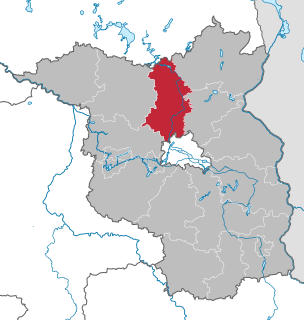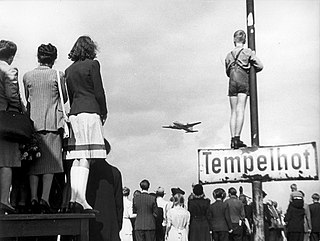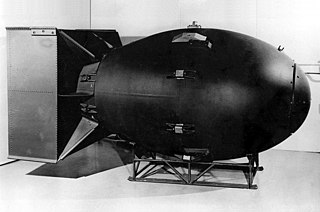
In nuclear strategy, a first strike is a preemptive surprise attack employing overwhelming force. First strike capability is a country's ability to defeat another nuclear power by destroying its arsenal to the point where the attacking country can survive the weakened retaliation while the opposing side is left unable to continue war. The preferred methodology is to attack the opponent's strategic nuclear weapon facilities, command and control sites, and storage depots first. The strategy is called counterforce.
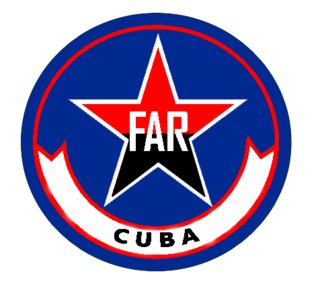
The Cuban Revolutionary Armed Forces consist of ground forces, naval forces, air and air defence forces, and other paramilitary bodies including the Territorial Troops Militia, Youth Labor Army, and the Defense and Production Brigades, plus the Civil Defense Organization and the National Reserves Institution.

The R-7 was a Soviet missile developed during the Cold War, and the world's first intercontinental ballistic missile. The R-7 made 28 launches between 1957 and 1961, but was never deployed operationally. A derivative, the R-7A, was deployed from 1959 to 1968. To the West it was known by the NATO reporting name SS-6 Sapwood and within the Soviet Union by the GRAU index 8K71. In modified form, it launched Sputnik 1, the first artificial satellite, into orbit, and became the basis for the R-7 family which includes Sputnik, Luna, Molniya, Vostok, and Voskhod space launchers, as well as later Soyuz variants.
Operation Anadyr was the code name used by the Soviet Union for its Cold War secret operation in 1962 of deploying ballistic missiles, medium-range bombers, and a division of mechanized infantry to Cuba to create an army group that would be able to prevent an invasion of the island by United States forces. The plan was to deploy approximately 60,000 personnel in support of the main missile force, which consisted of three R-12 missile regiments and two R-14 missile regiments. However, part of it was foiled when the United States discovered the plan, prompting the Cuban Missile Crisis.
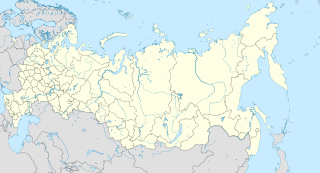
Kapustin Yar is a Russian rocket launch and development site in Astrakhan Oblast, between Volgograd and Astrakhan. It was established by the Soviet Union on 13 May 1946 and in the beginning used technology, material and scientific support from defeated Germany. Numerous launches of test rockets for the Russian military were carried out at the site, as well as satellite and sounding rocket launches. The town of Znamensk and Kapustin Yar was built nearby to serve the missile test range.

The R-14 Chusovaya was a single stage Intermediate-range ballistic missile developed by the Soviet Union during the Cold War. It was given the NATO reporting name SS-5 Skean and was known by GRAU index 8K65. It was designed by Mikhail Yangel. Chusovaya is the name of a river in Russia. Line production was undertaken by Facility No. 1001 in Krasnoyarsk.

The Romanian Land Forces is the army of Romania, and the main component of the Romanian Armed Forces. In recent years, full professionalisation and a major equipment overhaul have transformed the nature of the Land Forces.

The Missile and Space Intelligence Center (MSIC) is a component of the U.S. Defense Intelligence Agency. MSIC is located at Redstone Arsenal in Huntsville, Alabama.

Fürstenberg is a town in the Oberhavel district, Brandenburg, Germany.

After the establishment of diplomatic ties with the Soviet Union after the Cuban Revolution of 1959, Cuba became increasingly dependent on Soviet markets and military aid, becoming an ally of the Soviet Union during the Cold War. In 1972 Cuba joined the COMECON, an economic organization of states designed to create cooperation among the socialist planned economies dominated by the large economy of the Soviet Union. Moscow kept in regular contact with Havana, sharing varying close relations until the collapse of the bloc in 1991. After the demise of the Soviet Union, Cuba entered an era of economic hardship known as the Special Period in Time of Peace.
Alakurtti Air Base is a naval air base in Murmansk Oblast, Russia located 3 km northwest of Alakurtti. It is serviced by the 4th Naval Bomber Regiment (Su-24) and 485 OVP flying.

Russian military deception, sometimes known as maskirovka, is a military doctrine developed from the start of the twentieth century. The doctrine covers a broad range of measures for military deception, from camouflage to denial and deception.

Arthur Charles "Art" Lundahl was the key organizer of the US post-World War II imagery intelligence (IMINT), and an aerial-photography expert whose detection of missile installations in Cuba in 1962 led to the Cuban Missile Crisis.

The R-7A Semyorka, GRAU index 8K74, was an early Soviet intercontinental ballistic missile derived from the earlier R-7 Semyorka. It was the only member of the R-7 family of rockets to be deployed as an operational missile. The R-7A first flew on 23 December 1959, entered service on 31 December of the same year, and was formally accepted on 20 January 1960. It was declared fully operational on 12 September 1960 and was retired from service in 1968.
The 7th Guards Missile Rezhitskaya Red Banner Division – is a of the 27th Guards Missile Army, Strategic Rocket Forces located in ZATO Ozyorny, Tver Oblast Bologovsky District Tver Oblast, Russia.
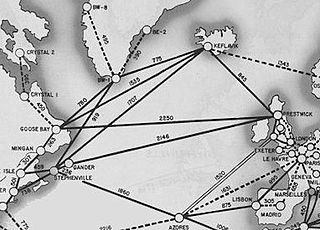
Presque Isle Air Force Base was a military installation of the United States Air Force in Maine. In the late 1950s and early 1960s it became a base for Strategic Air Command.
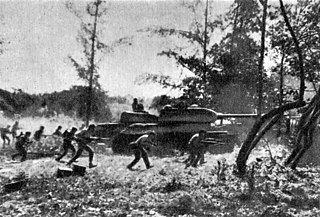
Tanks have been utilized on the island of Cuba both within the military and within several conflicts, with their usage and origin after World War II; the Cold War; and the modern era. This includes imported Soviet tanks in the Cuban Revolutionary Armed Forces today as well as American and British designs imported prior to the Cuban Revolution.



